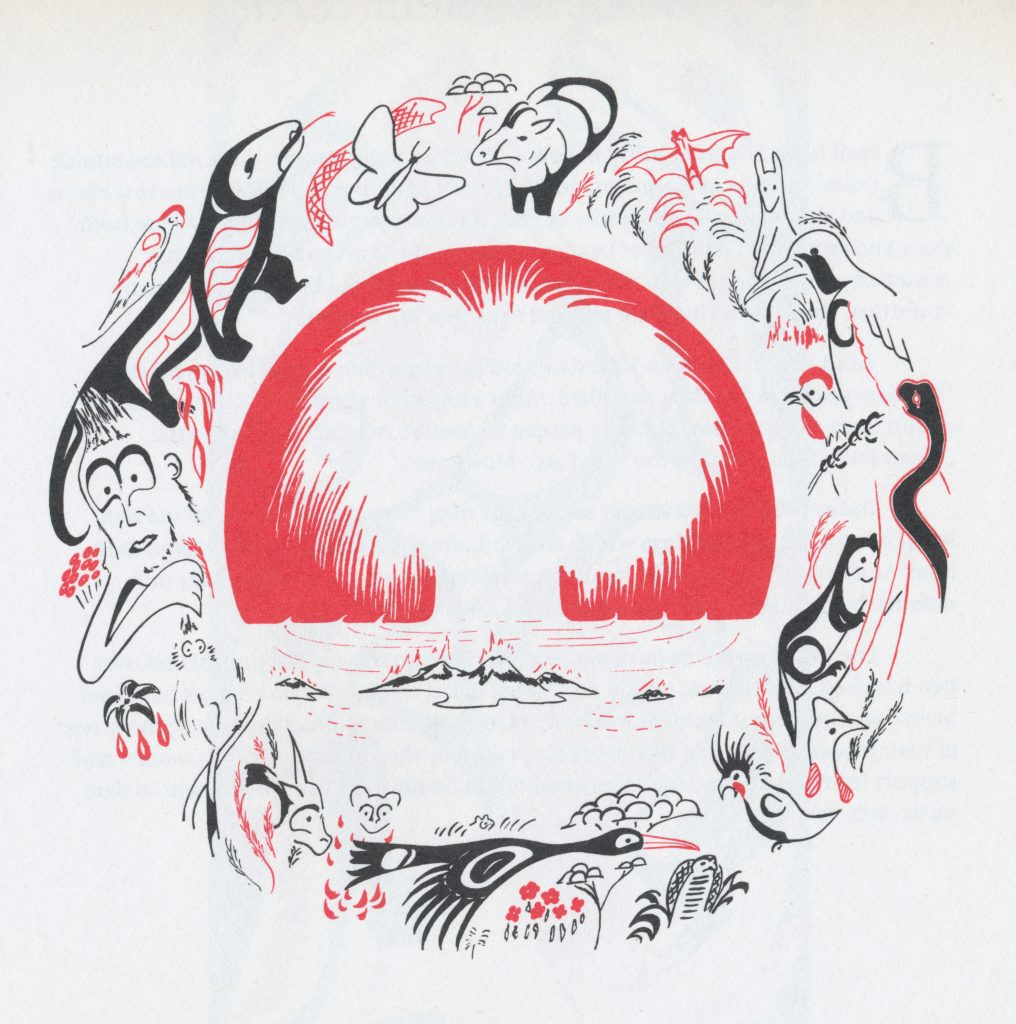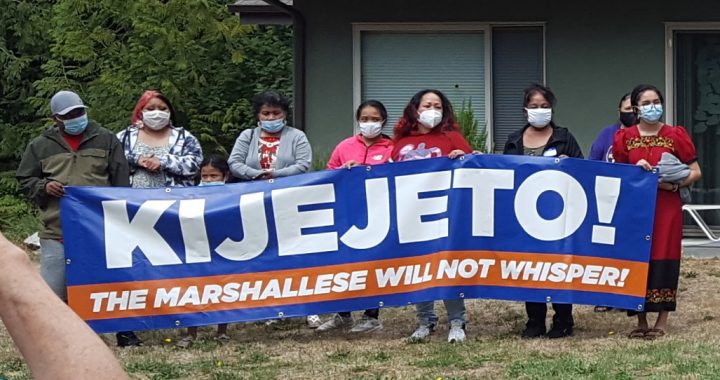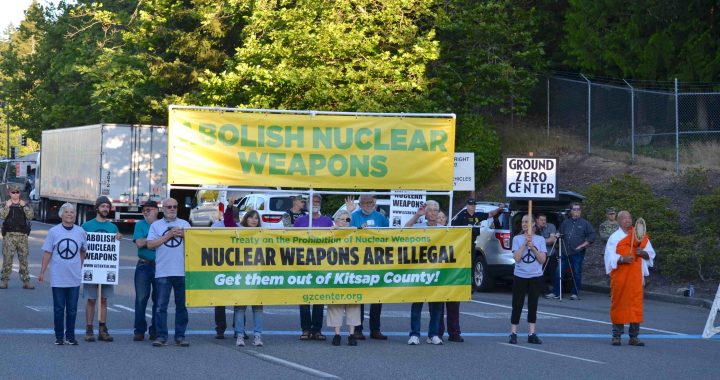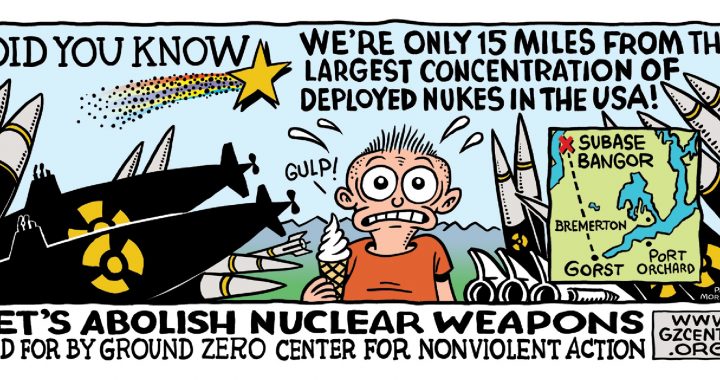The nearby islands’ inhabitants as well as U.S. military personnel stationed there for the test were exposed to the radioactive fallout, and subsequently evacuated. All were exposed to significant levels of radiation; although short term effects were mild, long term effects were significant for many. 90% of the Marshall Islands’ population experienced thyroid tumors, and they continue to suffer from the legacy of U.S colonialism and nuclear testing. The Marshall Islanders and their lands were essentially involuntary test subjects in the U.S. governments nuclear testing, as were U.S. military personnel.
Today the Marshall Islands are still contaminated, and radioactive cesium is found in water and fruits.
The U.S. is just one of a number of nuclear-armed nations that have tested nuclear weapons in places where the indigenous peoples had no power to prevent the radioactive poisoning of their lands and people.
We do not hear enough of the indigenous voices speaking of the injustices they have endured at the hands of colonizers.
Wii Muk’willixw (Art Wilson) is a hereditary chief of the Gitxsan people from northern British Columbia. In addition to being an artist, he is also an inland fisherman and a teacher of art and culture, and plays an active role in the governance of his nation.
The print and accompanying essay below is from his book HEARTBEAT of the EARTH: A First Nations Artist Records Injustice and Resistance, Copyright 1996 by Wii Muk’willixw (Art Wilson), and published by New Society Publishers. His print and essay speak directly to the effects of nuclear testing on indigenous communities around the world.

“Fallout”, by Wii Muk’willixw (Art Wilson)
Nuclear bomb testing has happened in many parts of the world — in Africa, the Pacic and Indian oceans, in China and in the Nevada desert — and the victims are most often First Nations people and the surrounding ora and fauna. Repeatedly, the United Nations has condenmed these horric acts that have left behind genetic defects, mutations, and a legacy of lingering sickness and death.
Many of the testing sites were chosen by people who called them “empty territories.” Are there really such places? The authorities like to target small populations because they feel that they will not create as much noise. “If nucleartesting is safe,” said the people ofTahiti about tests in French Polynesia, “then why not test your bombs in Paris?”
The U.S., Britain and France exploded more than two hundred nuclear bombs in the South Pacic between 1940 and 1962, sixty-six alone in the Marshall Islands. Out of twenty islands, fourteen are now left uninhabitable.
Meanwhile, the First Nations communities that live in these areas suffer the consequences of these experiments in their “backyards.” Leukemia, thyroid cancer, still births and fetal malformations are all higher than normal. Radioactive fallout after U.S. testing on Rongelap atoll meant the islands had to be abandoned, though assurances were made that the bombs were harmless. Recently, radioactive iodine was found at Mororoa lagoon following French tests.
The First Nations people who have lived in harmony with nature are left to live in these colonial-created hells. Their struggles continue. As one Marshall islander said, “We are only small — very few thousand people out there on tiny islands — but we are doing our best to stop this nuclear madness.” They deserve the support of all who treasure life.




